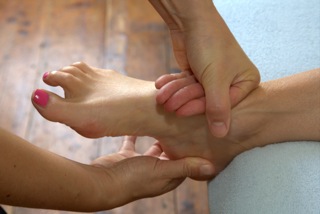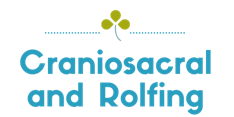


What is Rolfing?
Rolfing Structural Integration is a form of body and movement education. Working with the connective tissue, also known as fascia, Rolfing aims to release, align and balance the whole body back into alignment with gravity.
A full list of all UK Rolfers can be found at www.rolfinguk.co.uk.

About Ida Rolf

Over the course of her life she developed the ’10 series’ – the basic recipe for a Rolfer to work through the different areas of the body to ensure that the whole myofascial tissue has been worked.
Quotes about Rolfing
For me this description from the Rolf Institute of Structural Integration (based in Colorado) makes the most sense:
Quotes from Ida Rolf explaining what Rolfing is:
“When the body gets working appropriately, the force of gravity can flow through. Then spontaneously the body heals itself.”
and
Other useful Rolfing quotes:
David Wolfe (this is an extract form his Longevity Now book where he recommends Rolfing as a treatment).
What is Fascia?
There are three types of fascia: superficial, deep and visceral fascia. Certified Rolfers will work with all three. Fascia is a layer of fibrous tissue made of collagen, which is also known as connective tissue, as it is a continuous web connected throughout the whole body balancing stressors and counter stressors to create a flexible and mobile system. It surrounds and groups muscles, tendons, blood vessels and nerves. Fascia connects your muscles and bones to each other. It keeps certain parts separate from each other, while allowing others to slide over each other.
The purpose of working with the connective tissue, or fascia, is to relax and expand this tissue, particularly in areas where it has become dense or stuck. The pressure and heat from a Rolfer’s hands will enable the tissue to soften and lengthen so that it becomes more fluid. The release of thickened and strained areas improves the tissue consistency and the rate of metabolism of the system.
“It binds specific cells into tissues, tissues into organs, organs into systems, cements muscles to bones, ties bones into joins, wraps every nerve and every vessel, laces all internal structures firmly into place and envelops the body as a whole” Connective tissue as described in Job’s Body (Deahne Juhan).

Image from Job’s Body (Deane Juhan). “As with any continous fabric, a pull on one corner of the connective tissue framework exerts a pull throughout the whole structure.”
When the connective tissue is pulled in one direction it affects the whole body. As an example, if you consider making a bed, with a crease in the middle of the sheet, the way to solve it is not to work on the crease but to straighten out from the edges. This is often the case with Rolfing; that the pain in one area, is caused by a tension elsewhere in the body.
